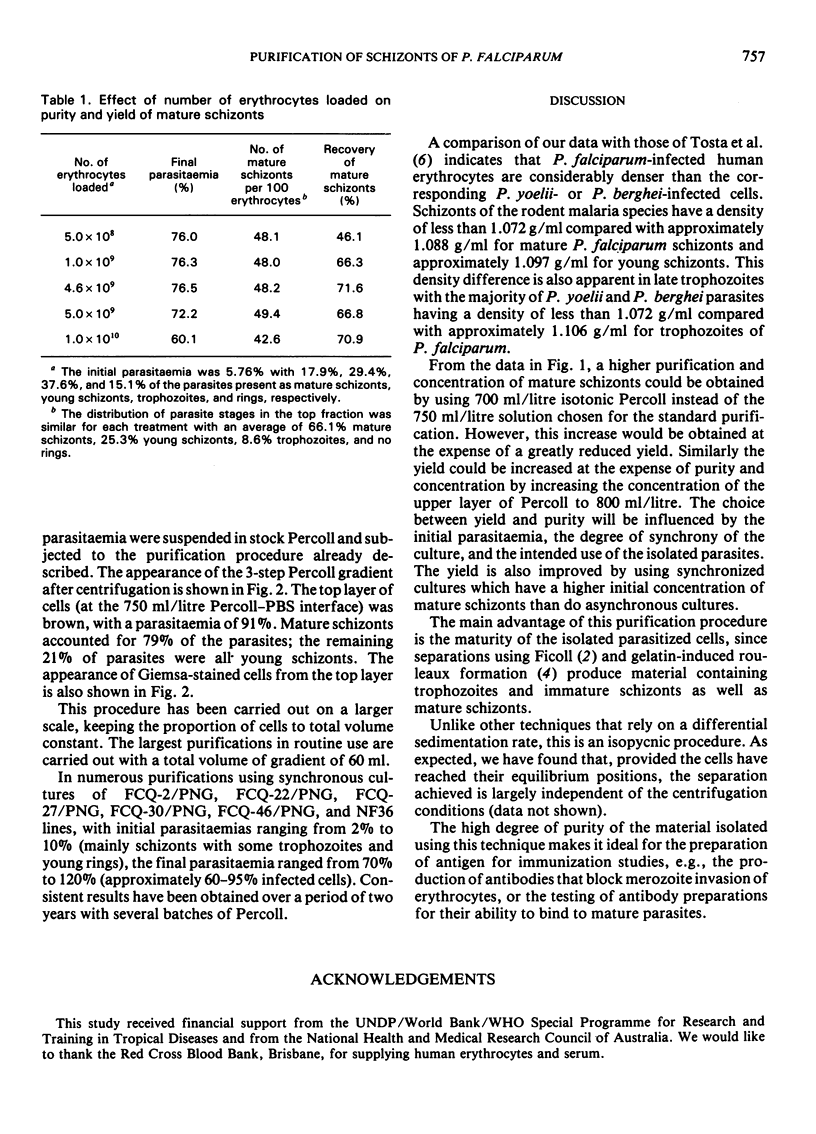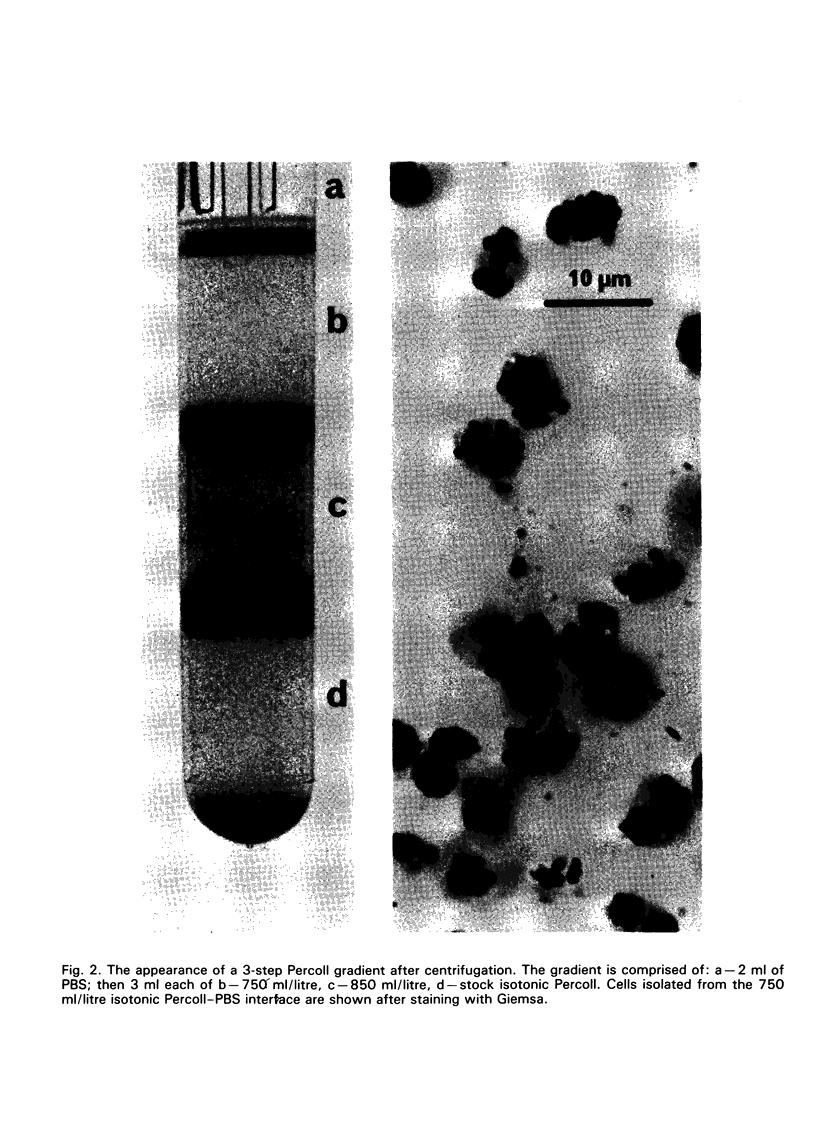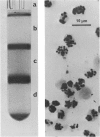Abstract
The density of human erythrocytes infected in vitro with Plasmodium falciparum has been measured by isopycnic centrifugation in colloidal silica gradients. The densities of uninfected cells, rings, trophozoites, young schizonts, and mature schizonts were approximately 1.110, 1.110, 1.106, 1.097, and 1.090 g/ml, respectively. This information has been used to design a simple procedure for the separation of schizonts from other parasite stages and uninfected erythrocytes. By using synchronized cultures it is possible to obtain essentially pure schizonts after two centrifugations using a bench centrifuge. Such preparations are an excellent source of parasite antigen for immunological studies.
Full text
PDF




Images in this article
Selected References
These references are in PubMed. This may not be the complete list of references from this article.
- Chen P., Lamont G., Elliott T., Kidson C., Brown G., Mitchell G., Stace J., Alpers M. Plasmodium falciparum strains from Papua New Guinea: culture characteristics and drug sensitivity. Southeast Asian J Trop Med Public Health. 1980 Dec;11(4):435–440. [PubMed] [Google Scholar]
- Jensen J. B. Concentration from continuous culture of erythrocytes infected with trophozoites and schizonts of Plasmodium falciparum. Am J Trop Med Hyg. 1978 Nov;27(6):1274–1276. doi: 10.4269/ajtmh.1978.27.1274. [DOI] [PubMed] [Google Scholar]
- Lambros C., Vanderberg J. P. Synchronization of Plasmodium falciparum erythrocytic stages in culture. J Parasitol. 1979 Jun;65(3):418–420. [PubMed] [Google Scholar]
- Langreth S. G., Reese R. T., Motyl M. R., Trager W. Plasmodium falciparum: loss of knobs on the infected erythrocyte surface after long-term cultivation. Exp Parasitol. 1979 Oct;48(2):213–219. doi: 10.1016/0014-4894(79)90101-2. [DOI] [PubMed] [Google Scholar]
- Mrema J. E., Campbell G. H., Miranda R., Jaramillo A. L., Rieckmann K. H. Concentration and separation of erythrocytes infected with Plasmodium falciparum by gradient centrifugation. Bull World Health Organ. 1979;57(1):133–138. [PMC free article] [PubMed] [Google Scholar]
- Pasvol G., Wilson R. J., Smalley M. E., Brown J. Separation of viable schizont-infected red cells of Plasmodium falciparum from human blood. Ann Trop Med Parasitol. 1978 Feb;72(1):87–88. doi: 10.1080/00034983.1978.11719283. [DOI] [PubMed] [Google Scholar]
- Reese R. T., Langreth S. G., Trager W. Isolation of stages of the human parasite Plasmodium falciparum from culture and from animal blood. Bull World Health Organ. 1979;57 (Suppl 1):53–61. [PMC free article] [PubMed] [Google Scholar]
- Tosta C. E., Sedegah M., Henderson D. C., Wedderburn N. Plasmodium yoelii and Plasmodium berghei: isolation of infected erythrocytes from blood by colloidal silica gradient centrifugation. Exp Parasitol. 1980 Aug;50(1):7–15. doi: 10.1016/0014-4894(80)90003-x. [DOI] [PubMed] [Google Scholar]



